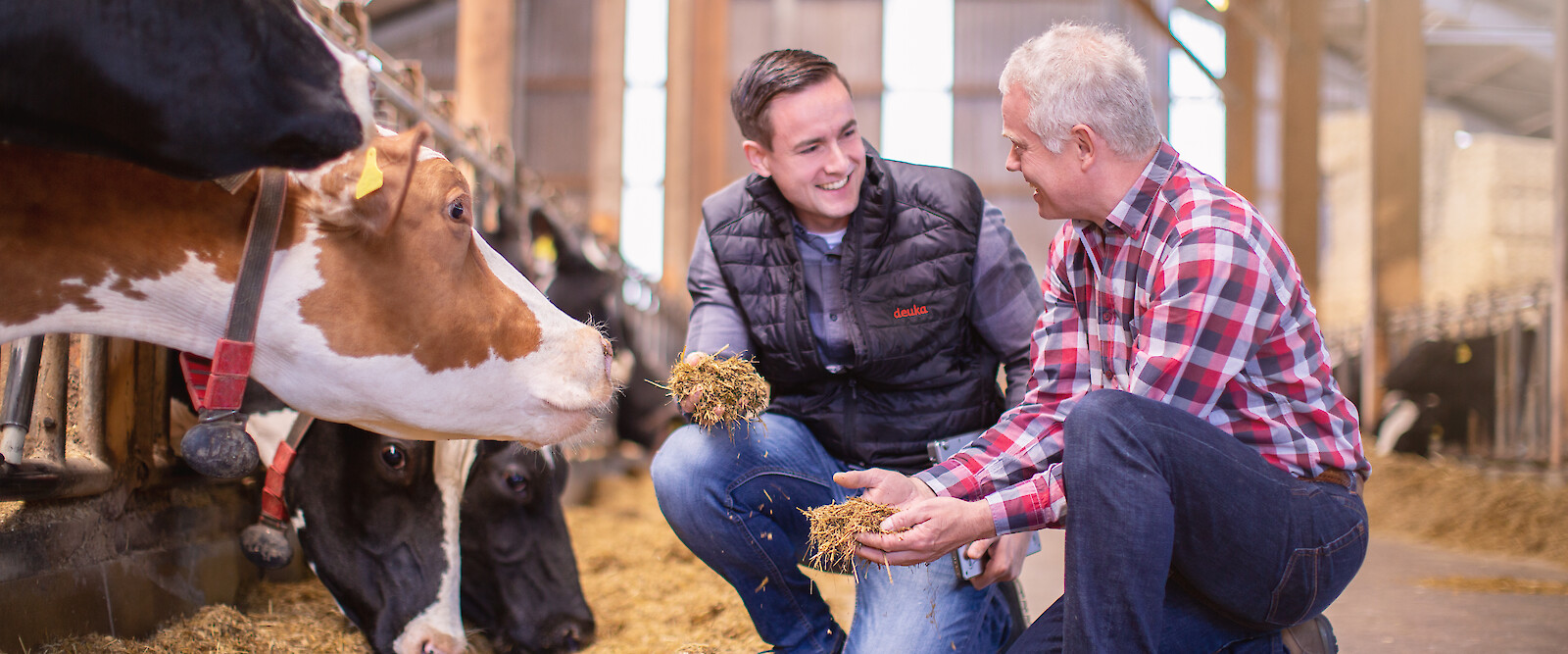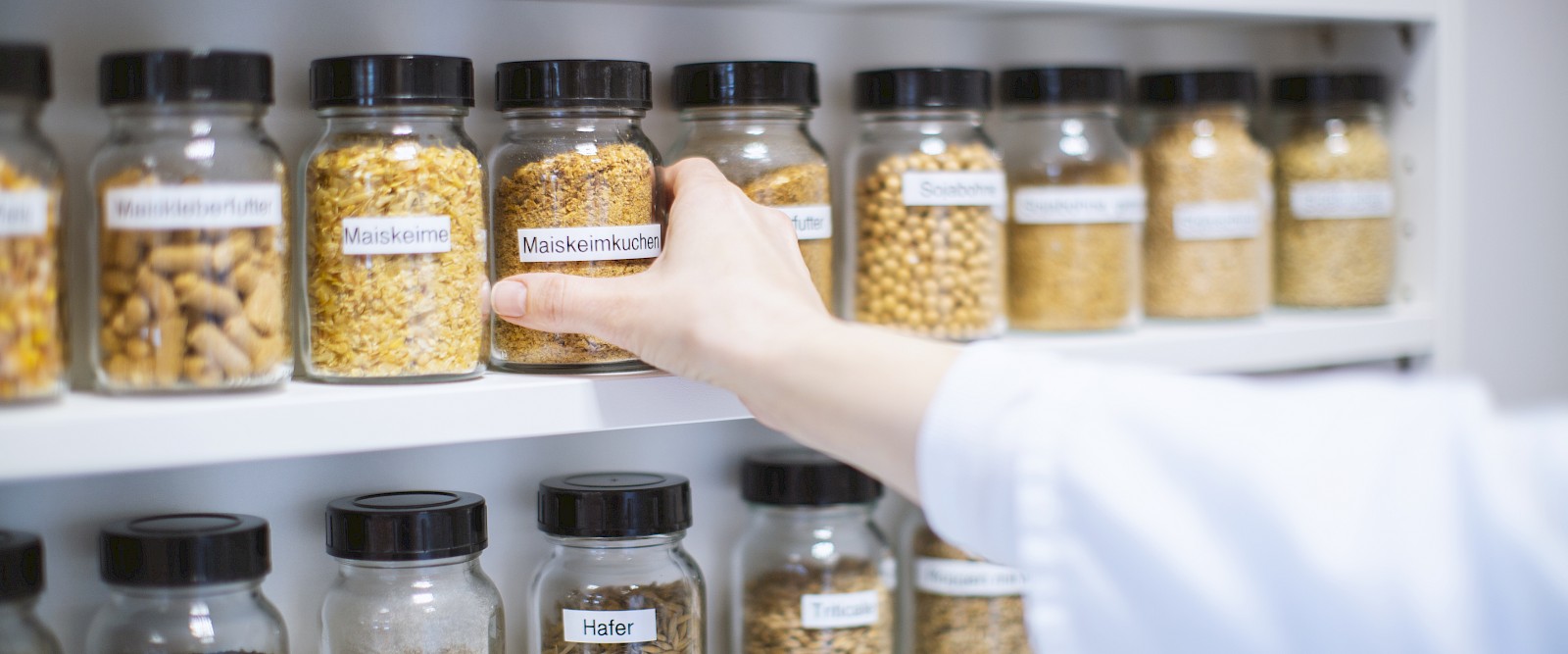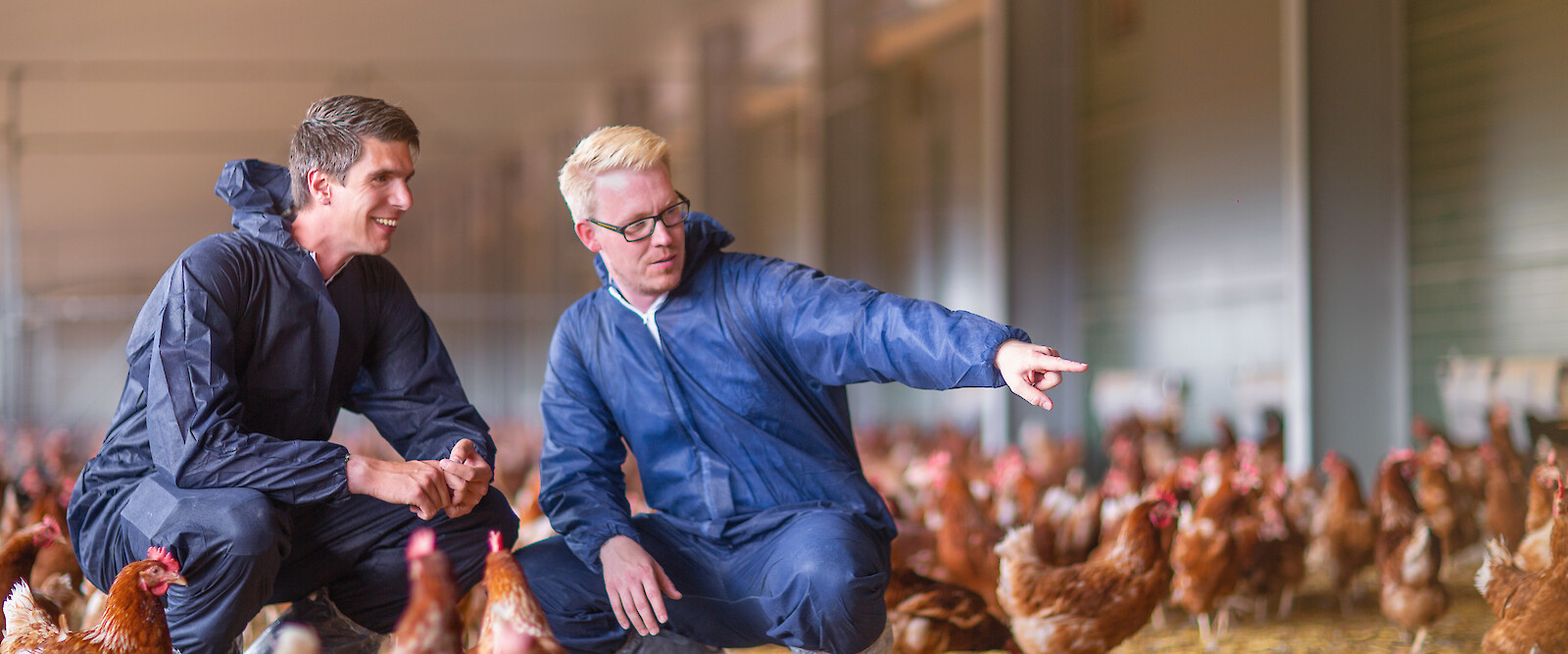Raw material and nutrient lexicon
Weitere Einträge
Vegetable oil
Vegetable oil is the oil obtained from plants (liquid at room temperature) such as soybean oil, rapeseed oil and sunflower oil. Vegetable oil contains high proportions of unsaturated fatty acids, which are responsible for the liquid consistency at room temperature. These are the monounsaturated oleic acid, the vital doubly unsaturated linoleic acid and the triply unsaturated linolenic acid. Vegetable oil contains a very high energy contentand is used in varying proportions in the feed, depending on the energy requirements of the animal species to be fed. In addition, the animal's need for the vital polyunsaturated fatty acids is ensured. In fattening pigs and fattening poultry, the use of vegetable oil is limited by the fat quality in the meat. Higher proportions of vegetable oil would produce a soft bacon, which is unsuitable for the production of long-life sausages, for example. Therefore, vegetable fat with lower proportions of unsaturated fatty acids is used in these feeds. The need for e.g. the vital linoleic acid is of course always taken into account.
Soya oil |
|
Ingredients |
Content
|
|
Dry matter, g/kg |
998,00 |
|
Crude fat, g/kg |
998,00 |
|
ME, MJ/kg |
35,50 |
|
ME, MJ/kg |
36,95 |
|
ME, MJ/kg |
29,90 |
|
NEL, MJ/kg |
19,60 |
Sources: DLG feed value tables for pigs; DLG feed value tables for ruminants; Rechenmeister 2000 (Chamber of Agriculture Westphalia-Lippe); CVB Veevoedertabel; DLG Information 2/2001 Structure and carbohydrate supply of the dairy cow






